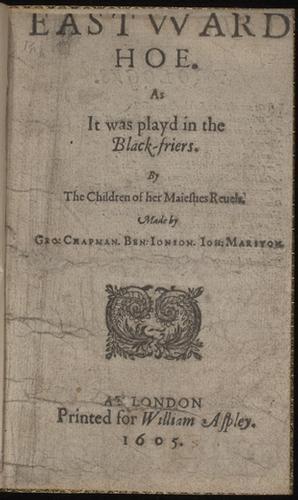 | George Chapman, Ben Jonson, John Marston
Eastward Hoe. As it was playd in the Blackfriers
London: For William Aspley, 1605 |
Eastward Hoe, first performed and published in 1605, was written in response to the very popular Westward Ho, written by Thomas Dekker and John Webster and produced the previous year. Eastward Hoe is famous for its jokes (probably by Marston) about newly arrived Scots who were purchasing knighthoods that offended James I and landed Chapman and Jonson briefly in prison. Marston escaped arrest by leaving town. However, the play made much more fun of the new London middle class, adding a moral tone to the city-comedy genre. The conclusion, probably by Jonson, states: “Now London, look about / And in this moral see thy glass run out.”
Bequest of Mollie Harris Samuels |
|